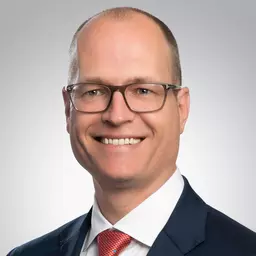Overall, we are extremely optimistic about the state of the multifamily market as we look to 2016 and beyond. The sky is blue, the sun is shining and the wind is at our backs. We need to be aware, however, of the challenges on the horizon; specifically, the complete depletion of the Government Sponsored Enterprise’s (“GSE’s”) capital reserves. This challenge must be addressed before it becomes a crisis.
Today’s Market Calls for Diverse Capital Sources
The multifamily market boom continues full throttle into a new year of seemingly unbridled optimism. Investors remain bullish on the sector and financing options are robust. The fundamentals of the sector remain very strong, and so far, credit standards are being maintained. Demand for rental housing remains high as consumer preferences continue to shift in regards to homeownership; strict underwriting standards for single-family mortgages constrain availability of credit; and the health of economy continues to improve with job growth and declining unemployment. Additionally, the next few years will see the large wave of maturities that will need to be refinanced as the 10-year loans from the peak period immediately prior to the crisis will reach maturity. This wide variety of sponsors, markets, asset qualities, leverage needs and other variables will demand a variety of capital sources with wide-ranging criteria.
Agency “Report Card” Looks Promising
Fannie Mae and Freddie Mac, collectively the Government Sponsored Enterprises (“GSEs”), are active capital providers in the multifamily sector. The size of the market exploded in 2015 and will push their annual volumes to near record levels. The GSE’s regulator, the Federal Housing Finance Agency (“FHFA”), establishes a scorecard every year to govern the GSEs operations, which includes annual caps on lending volumes for each of the entities. The GSE scorecard for 2016 has yet to be released, but the indications so far point to very similar terms as the 2015 scorecard with some minor adjustments. These levels are expected to be sufficient to allow the GSEs to serve the market while private capital continues to provide a majority of the capital in the multifamily sector.
Steady Results Diminish Threat of GSE Overhaul
The GSEs are entering their eighth year in conservatorship, which was intended to only be a temporary structure. This open-ended status has perpetuated that state of uncertainty for the entities and the market. The competing visions for the future state of the GSEs range from the Republican’s plan to wind them down completely, to the Democrat’s vision to expand their affordable housing efforts, to Wall Street’s desire to recapitalize and release them. But, no movement is expected as GSE-reform does not seem to be on the horizon. In the meantime, the GSE’s risk-sharing models of the multifamily platforms continue to produce solid results for the marketplace and the taxpayers.
Planned Reduction in Capital Reserves Could Spell Disaster for Fannie Mae and Freddie Mac
Under the terms of conservatorship, the GSEs sweep their quarterly profits to the U.S. Treasury each quarter as a dividend for the 2008 intervention. To date, these dividends have paid the U.S. Treasury $241 billion, well above the collective capital infusions of $187 billion. However, in addition to the profit-sweep dividend, the U.S. Treasury also sweeps a portion of the GSE’s capital reserves every quarter. This planned reduction of capital reserves will fully deplete the operating reserves of the GSEs in 2018, leaving the entities with zero capital cushion to absorb any market fluctuations. No company in the world operates in this fashion, and in fact, companies have been growing their capital reserves in recent years to handle potential downturns.
Freddie Mac’s third quarter of this year resulted in a $475 million loss from interest rate volatility, but the organization had sufficient reserves to cover the losses. Fannie Mae experienced the same event but narrowly avoided a loss. In the future, a similar scenario will require a draw from the Treasury and the responses from DC to Main Street will be visceral. We know this event is coming, and yet, nothing is being done to prevent it. After the fact, it will be too late, and the response will be driven by emotions and politics. This needs to be addressed now.
Northmarq is a full-service capital markets resource for commercial real estate investors, offering seamless collaboration with top experts in debt, equity, investment sales, loan servicing, and fund management. The company combines industry-leading capabilities with a flexible structure, enabling its national team of experienced professionals to create innovative solutions for clients. Northmarq's solid foundation and entrepreneurial approach have built an annual transaction volume of more than $39 billion and a loan servicing portfolio of more than $76 billion. Through the 2022 acquisition of Stan Johnson Company and Four Pillars Capital Markets, Northmarq established itself as a provider of opportunities across all major asset classes. For more information, visit: www.northmarq.com.
